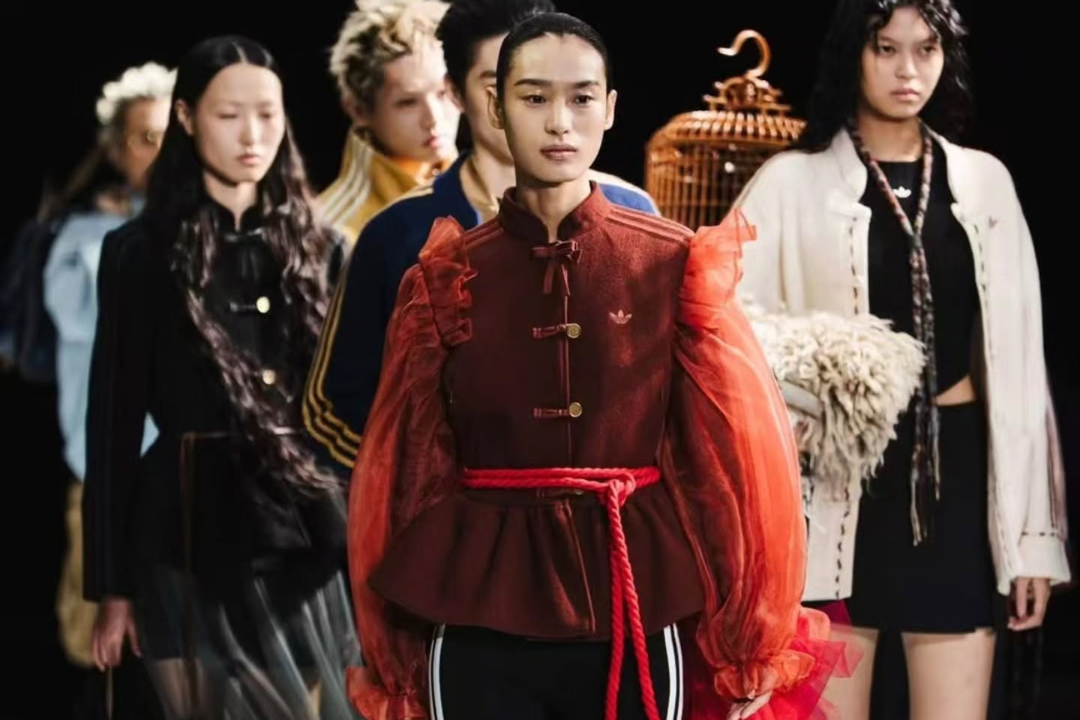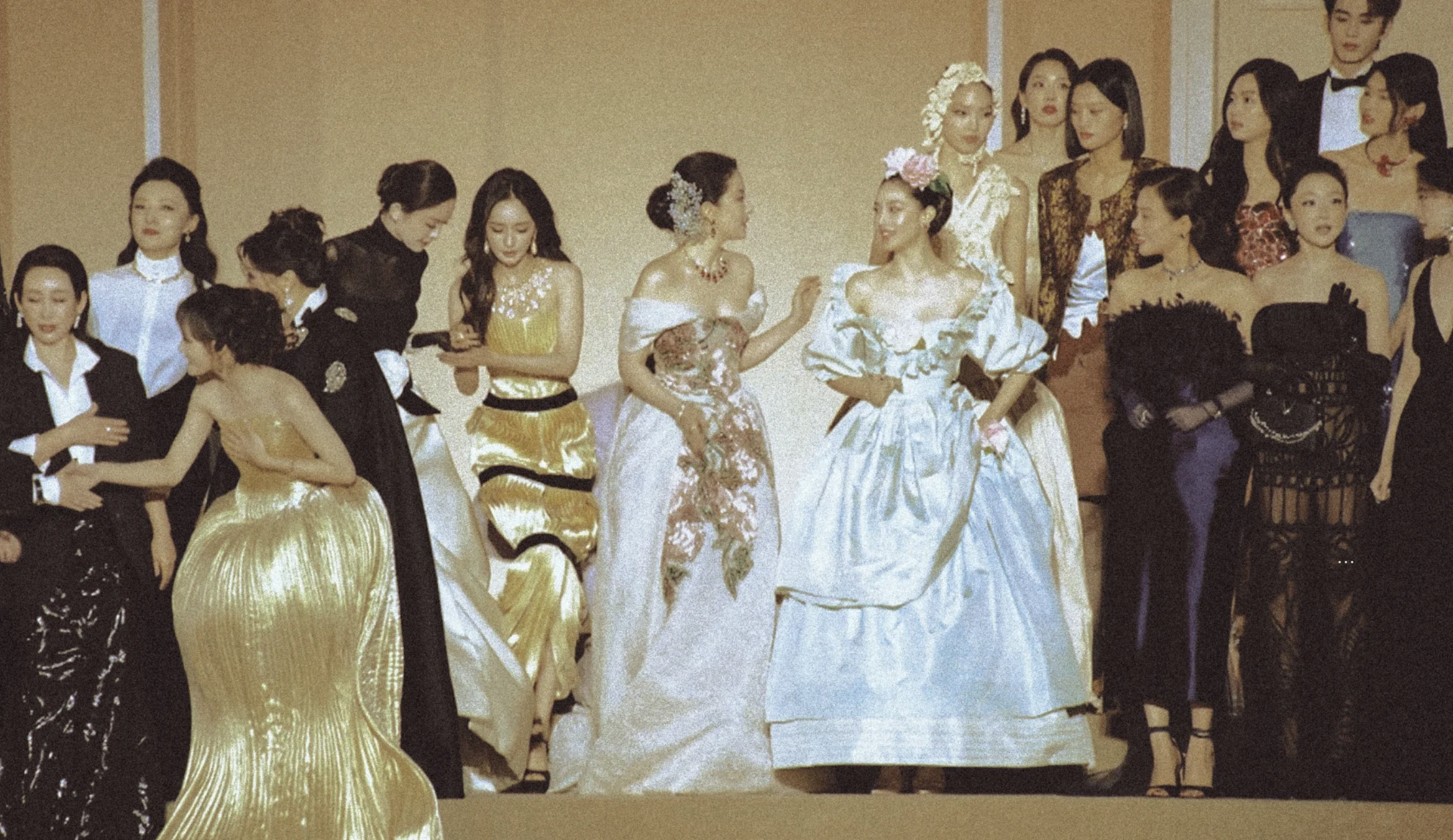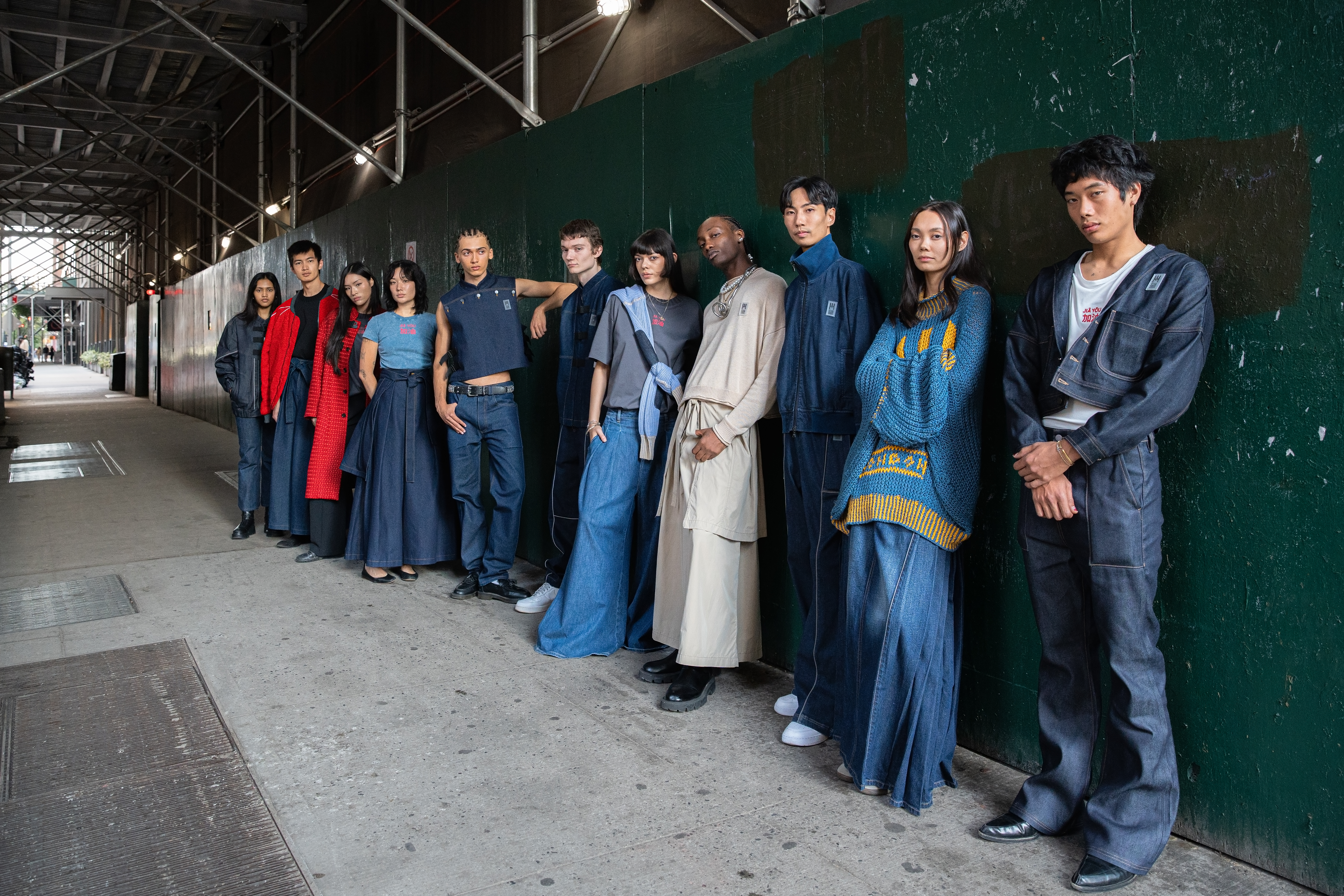Having first come to China as a student, Haitian-American beauty Tina Rateau has appeared in two European editions of Vogue, walked for Shanghai Fashion Week four times, and built a fully-fledged modeling portfolio in the span of only a few years.
As one of China’s few but growing number of Black models, she reflects here on the daily cross-cultural challenges she faces, what it’s like on one of the world’s most closely-watched catwalks, and why modeling has inspired her to get behind the camera.

Image: Taobao
How did you start modeling in Shanghai? Were you “discovered?”
When I first came here as a student, one of the other students came up to me in my school’s cafeteria and asked me to model her designs in the end-of-semester fashion show. Through her pictures, her teacher liked me and hired me to do the entire class portfolio. The photographer also liked me and I did a couple shoots for him — he was the one who got me connected to my agency.
When I started with them, the agency was fairly new. They set up a group chat and would send a daily schedule of casting calls to all the models. If you work for them full-time, it’s expected that you go to all of these castings. But they also know that I’m often not what the client is looking for.
Had you modeled before coming to China? How have clients here received you?
I had never modeled before coming here. A lot of people have been telling me to do it — I feel like it’s kind of a joke from the universe. But the reason I didn’t do it was my mother. She’s an immigrant mother, she doesn’t see where your income is coming from in modeling. She only just started supporting me recently, when I started getting jobs for brands that she’s actually heard of.
I’ve mostly modeled in Shanghai, Suzhou and Hangzhou. Sometimes I get the opportunity to go to other cities like Beijing or Guangzhou, but I’m not able to make it. A lot of brands have their offices outside of Shanghai — because rent is cheaper, I’d imagine, and they’re still close enough to send models over and just cover their train ticket.

Images: Taobao
In terms of how I’ve been received — well, I guess? There’s a lot of curiosity, they just want to know where I’m from, or they’ll say things like “oh, I like your skin color.”
They often have no idea how to do my hair, though. Being a Black model in China means you often have to be your own hairstylist. I bring my own afro pick, since many stylists don’t know how to use one. With an afro pick you go up, from root to tip. They think that it hurts me to do that, but it doesn’t at all.
I’ve noticed clients here also don’t like big ‘fros — they will try to shrink it somehow. They don’t know I speak Chinese either, so I’ll hear them say, “Can we do her hair smaller? Can she somehow make it smaller?” Sometimes they don’t know how to do my hair — or worse, sometimes they act like they know. They try to style it like white hair or Chinese models’ hair.
One time a guy tried to flatten it and didn’t know what to do, so he actually put a book on my hair and would try to push it down, and spray everything around it with hairspray. Another time a client didn’t know how to style my hair so they put actual tape on my hair. I can’t even show you a picture because they realized how bad it was and quickly fixed it. Sometimes it’s just funny, to be honest.
I also always bring my own foundation with me. When I first started, I didn’t, and they’d put the “standard” skin color on my face and I’d end up looking like a ghost. They’d go with it, and the end product would be awful. And that makes me look bad, because we use the pictures you’re taking to advertise me to other clients. I’ve heard makeup artists complain sometimes that it’s really hard to find darker skin colors available even in other countries, so I know it’s sometimes out of their control. So now I bring foundation with me everywhere.
Related:
 Photos: Shanghai’s First Ever Black Fashion Week is Breaking BarriersArticle Nov 29, 2017
Photos: Shanghai’s First Ever Black Fashion Week is Breaking BarriersArticle Nov 29, 2017
Something I come across a lot is that they’re not used to models having very different body types. At almost every shoot, they make a comment on my bust, usually saying that it’s too big. I’m a 32DD cup size, but I’m super skinny. That’s a big contrast from the beauty standard, which is generally more flat chested and petite. So when they make the clothes, they don’t want it to show, especially on [Chinese ecommerce platform] Taobao. Sometimes I don’t get jobs because of that.
One time a client hired me twice, for winter and then for summer clothes. Again, they didn’t know I spoke Chinese, and they spent the entire time complaining about my body — about my bust particularly. They were like, “Did she gain weight?” I was so pissed, but I had to keep it together in order to finish the shoot.
Sometimes my agents lie about my shoe size, but that’s super painful. I saw a comp card once that said I was 39 and I called them out for being liars. The shoe sizes here are a lot more limited, so in their minds, lying about my shoe size might help me get more jobs. It’s not just me either; a lot of male models have to force their feet into shoes two sizes too small. I saw it happen at the Converse show I walked for. An international shoe brand — can you imagine?
A good experience I had was when the client somehow figured out that I can speak Chinese. They were so happy, because their English was pretty limited. They also asked me to communicate to the other models. At the end of the shoot, the director even came up to me and was like, “Thank you so much, it was so great working with you. I’m so happy you speak Chinese.”
There is so much that is left unsaid when you don’t speak the language, so when they find out you can speak, you can instantly communicate with them better. It’s like their whole persona changes. I wish I could do that more often, I think a lot of these clients are really nice, it’s just — a lot is left unsaid.
Do you feel like you’re seeing more Black models, or at least, more visibility for Black models in China?
I see other Black models at castings but I don’t know them personally. There’s another female model I know who I think is probably the number one model on call right now [in Shanghai]. She’s from Tanzania. She’s everywhere.
Many of the other models that I’ve seen at castings I think are Brazilian; I hear them all speaking Portuguese. I’d estimate that out of the total models in China, most of them are definitely Chinese. I’m being generous, but maybe… 40% are foreign. And out of that 40%, 80% are Russian or Ukrainian or Eastern European — and I should add, some of those girls are like, 14 or 15. So that’s a thing. And I’m being generous… I don’t even think we’re 5% of the foreign models. I mean, I can count them on my fingers [laughs]. The castings I go to ask for Black models, so I see them all the time.

Images: Vulkan
I think there’s so few of us because China is still considered scary for people. Most people come for like, three months or so and then leave. You don’t really get to learn the language, or even get used to living here. Being Black and coming to China, it’s an especially big unknown.
Agencies here also don’t necessarily have that good of a reputation so, for instance, if you have a friend that came back from modeling in China and told you how things really went down, you’re more likely to go to Europe because they’re more likely to treat you better.
We’re also just not the beauty standard here. That’s a fact. It is weird, too, to impose someone else’s beauty standards onto China’s thousands of years of beauty standards. That said, I still think it’s still important to accept any and all kinds of beauty. I acknowledge that it’s complicated.
Related:
 Chinese Model’s Freckled Face Divides NetizensSome say the images “demonize” Asian beauty, while others applaud Zara for the aesthetic decisionArticle Feb 19, 2019
Chinese Model’s Freckled Face Divides NetizensSome say the images “demonize” Asian beauty, while others applaud Zara for the aesthetic decisionArticle Feb 19, 2019
But yeah, I do see more Black models these days. That might have to do with agencies here having better relationships with Brazilian agencies. But I think it also has to do with Chinese clients trying to mirror the high fashion industry. I think high fashion in general is trying to be more inclusive. So many high fashion brands are hiring more Black models. With LVMH after Virgil Abloh came on board, you see his fashion shows and it’s like, “This is what it could be, man!” And China is trying to mirror a lot of foreign trendsetting in that way. It’s like, “If Black models are cool abroad, we have to get that going here.”
But here, still mostly for streetwear, because that’s what’s considered “cool,” or if they want to do some “throwback” to the 1970s. I definitely think it has to do with a growing interest in hip hop as well. Although I am seeing some brands move away from that.
The Tanzanian model I mentioned earlier, I saw recently she’s been hired to model gowns. And that’s amazing to me. In China, I think you’d rarely ever see a Black model in a gown — that’s not what they want us to be in.
I really hope that it’s not just a trend and that it’s going to die down. I don’t want to call it a trend. As long as that image doesn’t die down, the need for diversity — I think there could be more Black models here.
This year will be the fourth season you have walked for Shanghai Fashion Week. What is it like being backstage? Who are some of your favorite designers you’ve worked with?
It’s super hectic. I just try to stay out of people’s ways, to be honest. Stress levels are pretty high, so many people, so much energy backstage. The press will be backstage taking photos, but the makeup artist isn’t done so they’re waving people away like, “Can you stop!” There’s also ayis [aunties] in the back. They’re so cute! If you have two or three outfits in a particular show, you have to rush backstage and they’ll help you change — they have pictures from the fitting of what the outfit is supposed to look like.
My first Shanghai Fashion Week came on like a storm — three different shows. I loved working with Sirloin and with FIXXED Studios. All of those guys are so nice, they understand “relationship management.” And YIRANTIAN, they’re an all-Chinese brand, I really like their designs. They’re the first ones that ever put me in something that wasn’t streetwear. No one has ever put me in something like that. You could go out in this and look fly as hell.

Images: YIRANTIAN
For these shows your call time is usually four or five hours ahead, and unless you have other shows going on, you’re usually standing around doing nothing. It’s a lot of dead time. Maybe two hours ahead, you start makeup, then there’s one rehearsal. The show director runs us all through how the show will go down, shows us how to walk. Every show is different. You might be asked to walk in a certain direction or to a certain tempo to match the music. Your walk is individual, but you also have to keep in mind the kinds of clothes you’re wearing. If you’re wearing streetwear, you have to present more “cool,” but I’m not going to do that wearing YIRANTIAN. It’s kind of common sense.
Anyway, after rehearsal we go back and do one more dress rehearsal, stylist and makeup come and checks everyone. Then it’s just… make sure you don’t fall! That’s my worst fear, man, especially since I’m not that great at walking in heels.
Related:
 Beijing-Born Designer Zhang Na Tackles Fashion Waste with StyleArticle Apr 05, 2018
Beijing-Born Designer Zhang Na Tackles Fashion Waste with StyleArticle Apr 05, 2018
You mentioned you’ve become more interested in creative direction now. What first drew you to that?
When I did the school show, the show director, Amy, was such a boss. You don’t know what stuff is going to look like when you’re going to rehearsal. But she has everything in mind and she’s coordinating with everyone like lighting, music, her assistants. Someone else that inspires me is Es Devlin. She designs and directs concerts for Beyoncé and Kanye West. She pours all of her imagination into the show, because she’s trying to create an experience for the audience.
It’s not just shows, either — I’m also interested in doing editorial and video. For someone just starting out, I think that Shanghai is a place where people are willing to help out, because they want to put themselves out there and get more experience. What I’m finding the hardest now is to get brands to lend you the clothes. The local brands are more in demand now, because Shanghai Fashion Week has put them on the level that they weren’t at five years ago.
Related:
 9 Chinese Fashion Labels to Watch in 2019These nine represent some of the best and brightest design talent China has to offerArticle Jan 01, 2019
9 Chinese Fashion Labels to Watch in 2019These nine represent some of the best and brightest design talent China has to offerArticle Jan 01, 2019
All these magazines like GQ and Vogue are asking them for their clothes for shoots, and then there’s me.
I think fashion shows in general are still a bit boring. There’s more that can be done rather than just a model walking down a runway. It’s not just about showcasing clothes, you kind of have to create a vibe or atmosphere that makes you feel like you have to buy this stuff. If you look at a show like, Chanel’s SS19 show, for instance, you’ll have models walking down a giant fake beach.
Or if you saw Rihanna’s Fenty x Puma show, where people ride out on motorcycles?
People are fighting to get tickets for this stuff — the least you can do is put on a show for them.
Header image: courtesy Ratpack
















